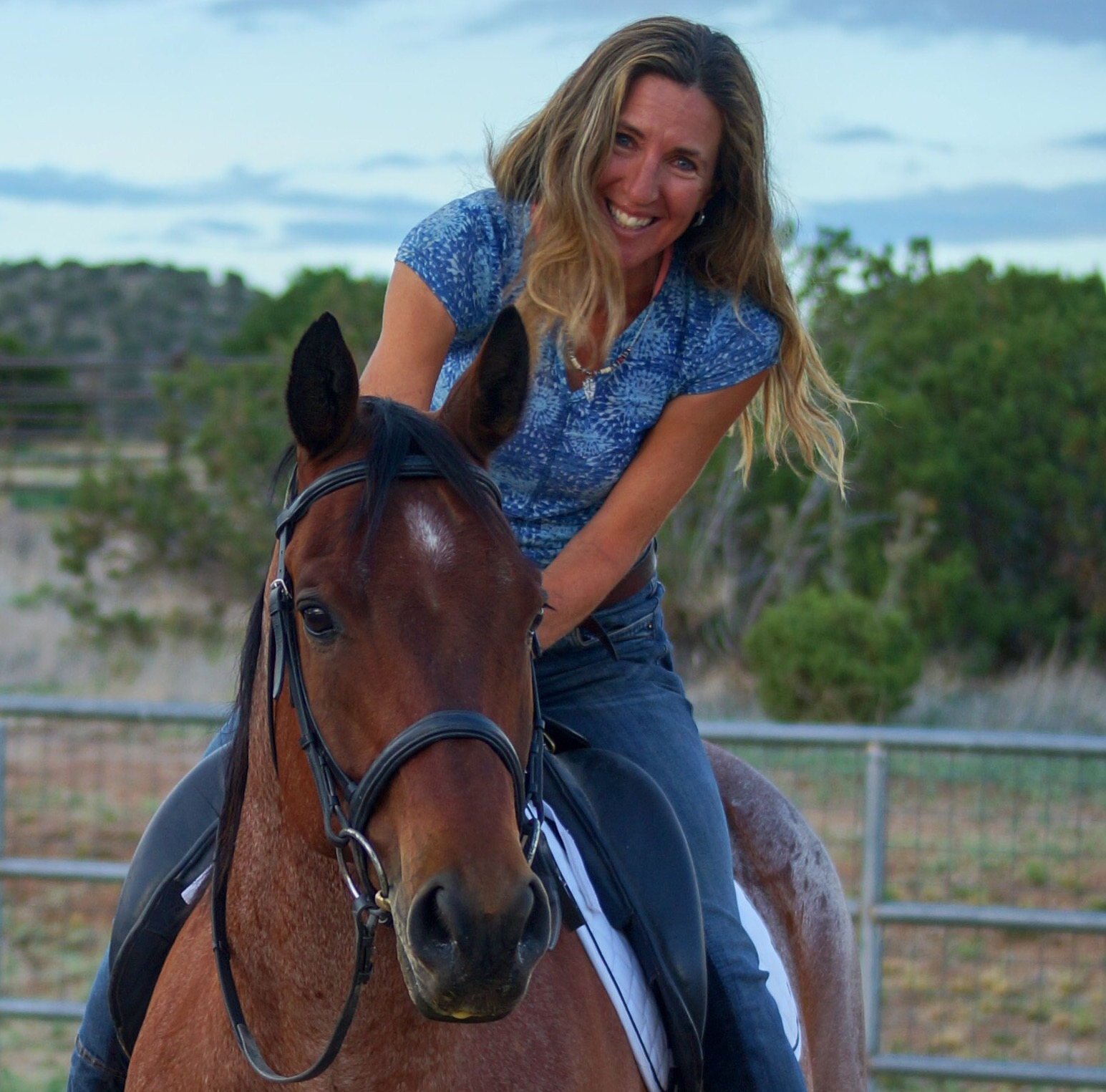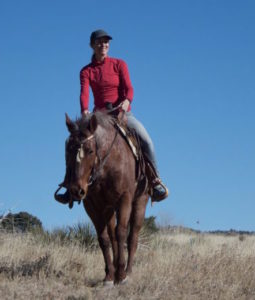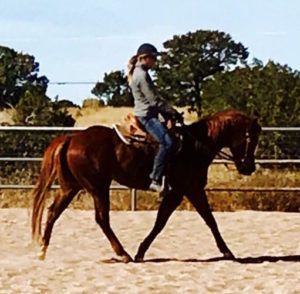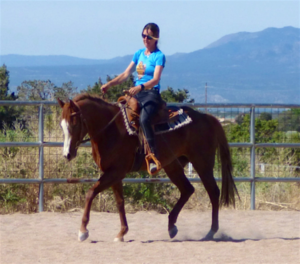 Editor’s Note: 2018 Best Horse Practices Summit presenter Katrin Silva grew up riding dressage in Germany before moving to the United States at age 19 to learn to ride Western. She’s been riding both disciplines for the last twenty years and is a regular guest columnist for Cayuse Communications. She lives in New Mexico where she works with dressage and Western clients. Visit her blog here.
Editor’s Note: 2018 Best Horse Practices Summit presenter Katrin Silva grew up riding dressage in Germany before moving to the United States at age 19 to learn to ride Western. She’s been riding both disciplines for the last twenty years and is a regular guest columnist for Cayuse Communications. She lives in New Mexico where she works with dressage and Western clients. Visit her blog here.
In this ongoing series, Katrin Silva and Amy Skinner will preview elements of their Summit presentation. Read more about their exciting, informative arena presentation here.
Read Divide Ain’t Wide, how Western riders and dressage riders can see eye-to-eye.
Silva writes:
 We tend to categorize riders according to their saddles. Of course, dressage and Western saddles are easy to tell apart. In spite of their differences, a good Western saddle and a good dressage saddle have more in common than they do with a hunt seat or jumping saddle because they encourage a more or less vertical rider position instead of a forward seat.
We tend to categorize riders according to their saddles. Of course, dressage and Western saddles are easy to tell apart. In spite of their differences, a good Western saddle and a good dressage saddle have more in common than they do with a hunt seat or jumping saddle because they encourage a more or less vertical rider position instead of a forward seat.
An obvious distinction is that dressage saddles are designed for the closest possible contact between horse and rider, while a Western saddle provides a buffer zone between them. Dressage saddles encourage maximum feel and communication between horse and rider, for better or for worse. Western saddles sacrifice some degree of this feel, but gain in mutual comfort. The dressage saddle translates the signals of a rider’s seat bones directly and instantly to the horse’s back, while a Western saddle, especially with a thicker pad underneath it, tones down signals as it distributes rider weight over a larger area.
 Of course, saddles evolve along with their respective riding traditions. Western saddles have progressed from the all-day, ranch work saddle to reining, cutting, roping, and endurance saddles. Dressage saddles also have evolved, too. Older dressage saddles look like today’s all-purpose English saddles, whereas more modern versions sport larger knee rolls and deeper seats.
Of course, saddles evolve along with their respective riding traditions. Western saddles have progressed from the all-day, ranch work saddle to reining, cutting, roping, and endurance saddles. Dressage saddles also have evolved, too. Older dressage saddles look like today’s all-purpose English saddles, whereas more modern versions sport larger knee rolls and deeper seats.
My students and I ride in a variety of saddles. Long trail rides tend to be more comfortable for horses and riders in a western saddle, for example. But, of course, it’s perfectly okay to trail ride in a dressage saddle. It’s much more important that the saddle in question fit horse and rider, and allows them to communicate. A western saddle that places the rider’s leg too far forward won’t work well. Nor will a dressage saddle that forces a rider’s leg into a correct-looking but ineffective overstretched position.
 Some of my students have ridden in a western saddle their entire life. Unless they plan to compete in classical dressage, there’s no compelling reason to switch. On the other hand, learning to ride in a different type of saddle is an excellent way to expand a rider’s comfort zone.
Some of my students have ridden in a western saddle their entire life. Unless they plan to compete in classical dressage, there’s no compelling reason to switch. On the other hand, learning to ride in a different type of saddle is an excellent way to expand a rider’s comfort zone.
I love my dressage saddle, but spend more time in Western saddles for a couple of reasons:
Fit:
I can put a Western saddle on quite a few different horses, whereas a dressage saddle is much trickier to fit.
Training level and goals:
I like to start green horses, or horses with tense backs, in a Western saddle because it spreads out my weight over a wider area. Communication with the horse’s back may be a little less precise, but at this point in the training, that’s okay because the horse has not yet learned the language of the rider’s seat.
 I feel more secure in a Western saddle, which is a good thing on horses I don’t know yet. I’ve started all types of young horses, including huge warmbloods, in a western saddle for almost 30 years. It works for me.
I feel more secure in a Western saddle, which is a good thing on horses I don’t know yet. I’ve started all types of young horses, including huge warmbloods, in a western saddle for almost 30 years. It works for me.
Once the horse’s back is more developed and the horse more educated, a well-fitting dressage saddle allows the rider to talk to the horse’s back more directly, one spine to the other, without the muffling effect of a buffer zone. But perfect communication doesn’t happen overnight. Like any relationship, it needs time and practice to develop. A good seat is a mandatory. A rider needs to learn to feel and follow the horse’s back with her own, otherwise the relationship is doomed from the outset. Alternatively, a green horse, or a horse with a tense or weak back is not ready for more closeness until his back becomes stronger and more relaxed.
A long-term romance starts with casual dating. Happy couples have spent some time getting to know each other before moving in together. Remember this while you build your relationship with the horse’s back. Proceed gradually, not all at once. Posting the trot, riding with a lighter seat, and using a well-made western saddle are all good strategies to introduce your back to your horse’s back without pushing the limits too early.
So, which type of saddle is best?
The one that fits you and your horse and the type of riding you do. The one you feel most comfortable in. The one that allows you communicate best with your horse.
Sometimes, I like to hop on a horse bareback. Partly, I do it out of nostalgia. When I was a little girl, we’d ride bareback for hours, on half-broke horses, sometimes just with a halter and a lead rope. It probably wasn’t the safest or smartest thing to do, but I learned a lot about balance and feel that way. Today, getting on without a saddle is a great tool for reminding my body of how close I can feel to a horse. It’s also a measure of how much I trust a horse – a milestone in our relationship, you could say.
